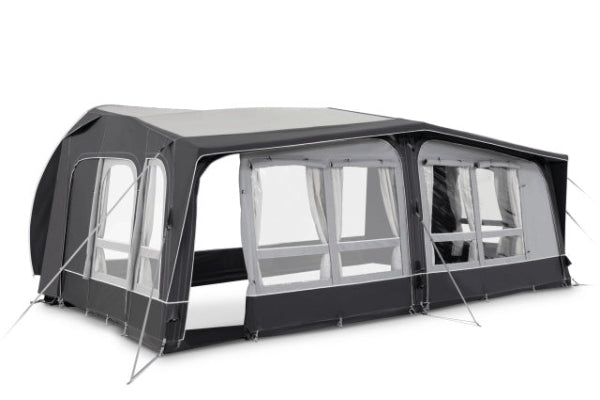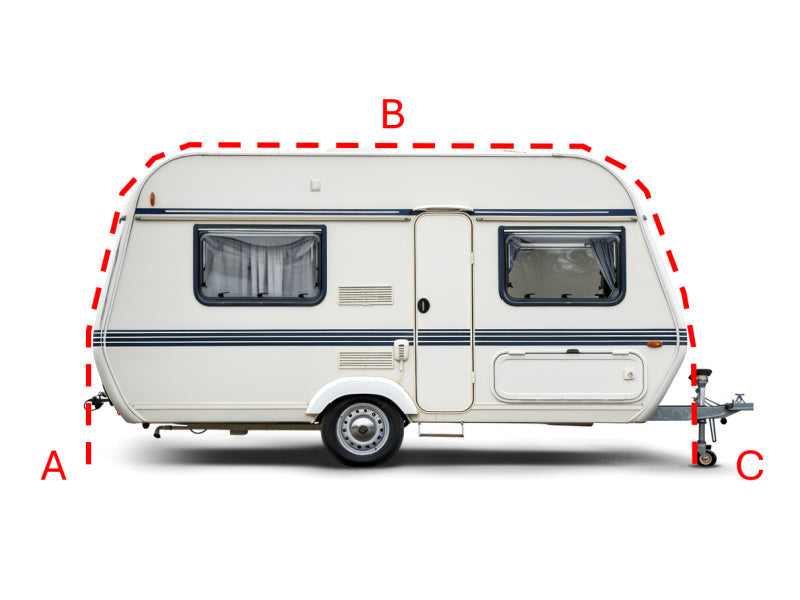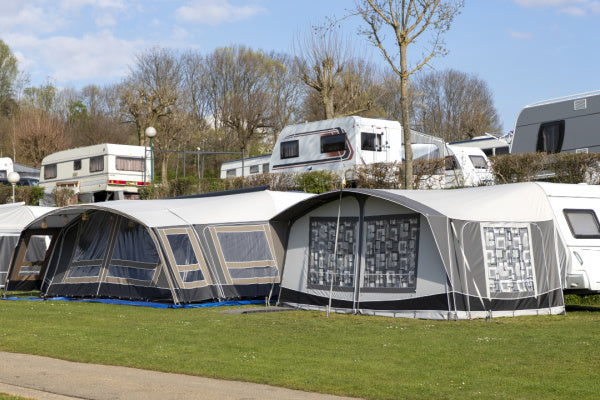Caravan Awning on Hardstanding: The Ultimate Guide
Dreading the faff of securing caravan awnings on concrete? A hardstanding awning setup is simply a weatherproof shelter fixed to your caravan using specialised pegs for hard surfaces. Master this essential caravanning skill to create a cosy outdoor space that won't blow away with the first gust of British weather!

Setting Up Your Caravan Awning on Hard Surfaces
Picture this: a perfect weekend getaway in your caravan, only to face the challenge of securing your awning on an unyielding concrete pitch. Setting up an awning on hardstanding doesn't have to be a headache-inducing experience. With the right knowledge and tools, even concrete pitches can become the perfect spot for your home away from home.
Challenges of Hardstanding
Let's tackle the elephant in the pitch - hardstanding surfaces present unique challenges that grass simply doesn't. Concrete, tarmac, and gravel each bring their own set of hurdles to overcome. Understanding these challenges is the first step toward mastering the art of secure awning setup.
Limited Ground Penetration
Try hammering a standard tent peg into concrete, and you'll quickly understand why hardstanding demands special attention. Traditional pegs simply bounce off these surfaces, leaving your awning vulnerable to the slightest breeze.
The solid nature of hardstanding means traditional securing methods become about as useful as a chocolate teapot. This limitation forces caravanners to think outside the box and embrace specialised solutions designed specifically for hard surfaces.
Risk of Damage to Awning Legs and Ground
Hard surfaces can be unforgiving on your equipment. Every slight movement of your awning's legs against concrete acts like sandpaper, gradually wearing away at your valuable gear.
The risk extends beyond your own equipment. Improper setup can leave lasting marks on the pitch surface, potentially leading to awkward conversations with site owners and unexpected costs. Nobody wants to leave their pitch worse than they found it.
Suitable Ground Anchors
The secret to successful hardstanding setup lies in choosing the right anchoring system. Modern technology has blessed us with several clever solutions that make securing your awning as solid as the ground beneath it.
Rock Pegs
Rock pegs are the heavyweight champions of the awning world. Built like tanks with reinforced tips and robust construction, these mighty anchors laugh in the face of concrete and tarmac.
Their design allows them to grip hard surfaces effectively without crumbling under pressure. While they might cost more than standard pegs, their durability makes them a worthy investment for regular hardstanding pitches.

Ground Screws
Ground screws bring engineering elegance to awning setup. These clever devices work their way into hard surfaces with minimal force, creating secure anchor points that hold firm in challenging conditions.
Their greatest advantage lies in their removability - they leave barely a trace when properly installed and removed. For sites where surface preservation is paramount, ground screws offer an elegant solution that keeps everyone happy.
Heavy-Duty Awning Pegs
Not all pegs are created equal. Heavy-duty awning pegs designed for hard surfaces feature wider heads and stronger materials, making them more reliable than their standard counterparts.
These specialised pegs distribute force more evenly, reducing the risk of bending or breaking during installation. Their robust construction means they can handle the extra strain of being driven into resistant surfaces.
Ratchet Straps and Tie-Downs
When the weather forecast looks ominous, ratchet straps and tie-downs become your awning's best friends. These additional securing methods work alongside your primary anchors to create a bombproof setup.
The beauty of ratchet straps lies in their adjustability. They can be fine-tuned to maintain perfect tension, ensuring your awning stays put regardless of what Mother Nature throws at it.
Protecting the Ground
Prevention beats cure every time, especially when it comes to protecting both your equipment and the pitch surface. Taking proper precautions saves headaches and helps maintain good relationships with site owners.
Using Ground Mats
Ground mats serve as the perfect mediator between your awning and the hardstanding surface. They create a protective barrier that benefits both sides of the equation.
These unsung heroes of awning setup offer multiple benefits:
-
They prevent scratches and scuff marks on the surface
-
They provide additional grip for better stability
-
They help distribute weight more evenly across the pitch
-
They manage water runoff effectively, preventing pooling
The small investment in quality ground mats pays dividends in equipment longevity and pitch protection. They're an essential part of any serious caravanner's toolkit.

Placing Boards Under Legs
Sometimes the simplest solutions prove most effective. Placing boards under awning legs might seem basic, but it's a technique that professional caravanners swear by.
These humble boards serve multiple crucial functions:
-
They spread the awning's weight across a wider area
-
They protect both the legs and the ground from damage
-
They help achieve perfect levelling on uneven surfaces
-
They provide stable foundation points for your entire setup
The key lies in choosing the right boards - they should be sturdy enough to handle the weight yet thin enough to remain stable. Marine plywood or purpose-made leg pads offer excellent solutions for this purpose.
Remember, successful hardstanding setup comes down to preparation and using the right tools for the job. With proper equipment and techniques, any hard surface can become the perfect foundation for your outdoor living space.
Taking time to properly secure and protect your awning setup pays dividends in longevity and peace of mind. After all, the goal is to spend more time enjoying your caravan adventures and less time wrestling with equipment.
Other content you might like:
- Caravan awning not rolling up straight
- Caravan awning not retracting
- Caravan awning not locking
- Caravan awning in high winds
- How to secure a caravan awning in high winds?
- How do you tie down a caravan awning?
- When should I take my caravan awning down?
- How to stop caravan awning flapping?
- Why do some campsites say no awnings?
- Caravan awning flooring ideas
- Caravan awning furniture ideas
- Caravan awning storage ideas




